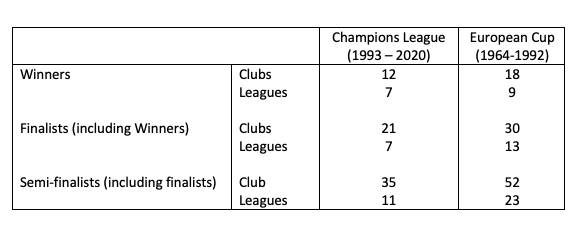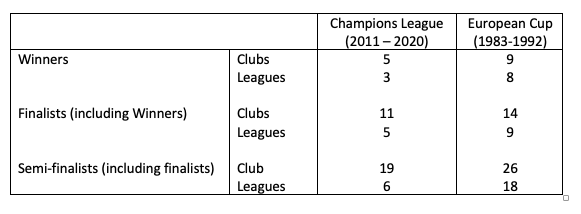For Irish football fans the days of attracting big clubs for European fixtures are now very rare. Shamrock Rovers played AC Milan earlier this season in the Europa League, but typically our clubs now are more likely have early round games against clubs from other lesser leagues.
These games came about because the European Cup used to be a competition between European league champions. Now it is a much bigger competition with the larger leagues now having up to four qualifiers. The teams from the big leagues are seeded so they are kept away from clubs in less illustrious leagues in the earlier rounds.
I think it is clear that the inclusion of more teams from the stronger leagues has improved the quality of the competition and we see much better games, particularly in the knock-out stages. The television viewer cannot complain and the Champions League is arguably the best club competition in the world.
However, as a supporter of a team in a less fashionable league I do also have a sense of the loss of these big occasions for fans like me.
There is also the implication for balance in the competition. Allowing more big clubs into the competition should mean that more clubs have a better chance of winning, since it is not necessary to win the domestic league to qualify. What we might also expect though is that the number of different countries producing winners may decrease, as more qualifiers from the stronger leagues, and the more forgiving move away from straight knockout, favour the better (and richer) countries.
The table below shows the number of different clubs and the number of different leagues that have won, lost the final, and lost a semi-final in the Champions League compared to the European Cup experience over a similar time period.
It is important to note that one of the strongest leagues (England) had no representatives in the European Cup from 1985 to 1990 after the Heysel tragedy. This gap does not change the different number of countries that won the European Cup, though it is interesting to note that no English team featured in a semi-final from the Liverpool defeat at Heysel in 1985 until Manchester United lost in the then Champions League the 1996/7 season.
It is also the case that we have seen fewer leagues represented in the final four places of the Champions League.
This has been particularly noticeable in the last 10 years. Since the 2010/11 season only five clubs from three leagues have won the tournament – Bayern, Liverpool, Chelsea, Barcelona, and Real Madrid. More remarkably, only five leagues have been represented in the finals (adding in PSG and Juventus) and six leagues when we drop down to include semi-finalists (Ajax). This means the last four places have been monopolised by the top 6 leagues (Spain, England, Italy, France, Germany, and the Netherlands).
Compare this to the final places in the last 10 years before the establishment of the Champions League. There 9 winners in 10 seasons – Hamburg, Liverpool, Juventus, Steaua, Porto, PSV, Milan, Red Star, and Barcelona. Eighteen different leagues had teams in at least the semi-finals.
I should note that I have used the current nations in the analysis – so that winners before 1989 that played in the Soviet and Czechoslovakian league are counted as Russian, Ukrainian, Cezh or Slovakian as appropriate. This turned out to be a minor issue as, for example, no East German teams featured and only Sebrian teams featured for Yugoslavia.
Allowing more teams from the stronger leagues is associated with greater concentration of success, at club and league levels. For the stronger, and richer, leagues in Europe this may very well be a feature rather than a bug.


 RSS Feed
RSS Feed